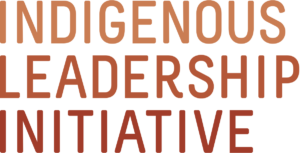UN Biodiversity Report Calls for Greater Role for Indigenous Peoples
INDIGENOUS LEADERSHIP INITIATIVE
Ottawa: Tues. September 15, 2020: The United Nations Global Biodiversity Outlook reports that the international community has failed to meet 2020 commitments to reverse dangerous declines in animal and plant species. It calls for scaling up solutions, including expanding protected areas and strengthening the role of Indigenous Peoples in biodiversity strategies.
Frank Brown, senior leader with the Indigenous Leadership Initiative, made the following statement:
“Indigenous Peoples experience firsthand the declines in salmon and caribou and the changes in permafrost, wildfires, and ocean acidification. We also have the knowledge systems developed over hundreds of generations to help address these challenges. Research shows that lands managed by Indigenous Peoples tend to be healthier and more vibrant than other areas. Now is the time to scale up Indigenous-led solutions.”
“In Canada, the most ambitious proposals for protecting lands and waters are coming from Indigenous Nations. New Indigenous Protected and Conserved Areas are sustaining huge refuges for animals and plants. Indigenous Guardians programs are managing lands across the country and conducting research on salmon, caribou, and migratory birds. We have proven solutions for helping sustain the natural systems all Canadians depend on.”
“Canada has a special responsibility to lead on biodiversity. It’s home to some of the largest intact lands left on the planet. By placing Indigenous-led conservation at the center of its biodiversity strategy, Canada can help conserve lands on the scale that nature and humans require. It’s our best opportunity to ensure our grandchildren inherit a planet that nurtures and sustains them.”
Haida Gwaii Watchmen at work. Credit: Bernard D. Roitberg
Background on Indigenous-led Conservation
Indigenous Protected and Conserved Areas: Many Nations are creating Indigenous Protected and Conserved Areas (IPCAs). IPCAs sustain healthy landscapes, clean waters, animals and plants, and carbon storehouses. They also elevate Indigenous Rights and Responsibilities, representing a modern application of traditional values and Indigenous laws and Indigenous knowledge systems.
IPCAs offer Canada the best chance to meet its commitments to protect 25% of lands by 2025. Three large-scale IPCAs have been established since 2018, including Thaidene Nëné, one the biggest territorial protected areas in North America. Many Indigenous Nations are working to create new IPCAs.
When Canada’s Nature Fund supported a suite of protected area proposals last year, it invested in over 25 IPCAs.
In northern Manitoba, for instance, the Sayisi Dene First Nation and their Cree, Dene, and Inuit neighbours have proposed protecting 50,000 km2 of the Seal River Watershed, which provides habitat for caribou and millions of migratory birds.
And in northern British Columbia, the Kaska Dena have proposed protecting Dene Kʼéh Kusān, an area the size of Switzerland largely free of roads and home to an abundance of wildlife.
Indigenous Guardians Programs: Indigenous Guardians manage lands and waters on behalf of their communities, incorporating local and traditional knowledge with the best of western science. They restore animals and plants, manage protected areas, and monitor and implement environmental protection plans on development projects.
There are over 70 Indigenous Guardians program operating across the country. Many Guardians programs help monitor IPCAs.
The Dehcho First Nations led the establishment of the Edéhzhíe Dehcho Protected Area/National Wildlife Area in the Northwest Territories in 2018. Members of the Dehcho K’ehodi Guardians co-manage the site, testing water quality and monitoring woodland caribou, migratory birds and cultural sites.


